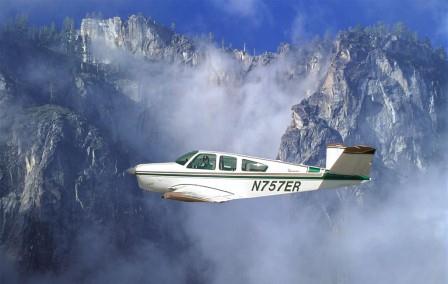|
Copyright ©2011 by Paul Niquette. All rights reserved. |
||
| There are
more than four
dozen
aircraft designs with V-Tails
-- in just about every category one might care to name
(amphibious jet,
business jet, carrier jet, electric sport, fighter
jet, general aviation,
helicopter, hypersonic, jet trainer, launch vehicle,
light jet, prototype,
racing monoplane, sailplane, space plane, stealth
attack jet, target drone,
technology demonstrator, tip-jet rotorcraft,
ultralight, unmanned aerial
vehicle, very light jet). The most famous is the
Beechcraft
Bonanza.
Puzzle solvers will find the meaning of the portmanteau ruddervator here and a simple explanation of the aerodynamics here. There are now more than four dozen designs of Unmanned Aerial Vehicles (UAVs) deployed by a dozen and a half NATO countries (Belgium, Bulgaria, Canada, Czech Republic, Denmark, France, Germany, Greece, Hungary, Italy, Netherlands, Norway, Poland, Romania, Spain, Turkey, UK, USA) plus a few others, of course (Russia, China,...). The various names for UAVs include Aerostar, Aladin, Avenger, Bayraktar, Buster, Crecerelle, Desert Hawk, Dragon Drone, Dragon Eye, Eagle, Evolution, Fire Scout, Gnat, Global Hawk, Grey Eagle, Harpy, Heron, Hummingbird, Hunter, Luna, Maco, Maverick, Mirach, Neptune, Orbiter, Phoenix, Pioneer, Pointer, Predator, Raven, Reaper, Searcher, Sentry, Shadow, SilverFox, Skylark, Sky Warrior, Snowgoose, Sperwer, Sofar, Swift, Tern, TigerShark, Watchkeeper, Wasp, Yastreb. The most famous is the Predator.
A vertical stabilizer is also visible below the fuselage, forming a three-part empennage. The ruddervators are each full-span control surfaces, which impose plenty of pitch and yaw authority just forward of the propeller. The Predator's autonomic control systems process commands via sophisticated fly-by-wire actuators, thus, without mechanical linkages for assuring orthogonality. Some solvers may wonder, Why does the Predator have an inverted V-Tail? Well, now, that's the makings of a puzzle, for sure. The Internet does not seem to offer an explanation. Heck, dozens of pages about UAVs in general and the Predator in particular provide detailed specifications and operating parameters. Surely the question about that strange V-Tail has been asked on-line many times by aviation enthusiasts. Must be some kind of a secret. Here's another question: Why has that configuration not been applied in the design of general aviation aircraft and airliners during the past century? That question is easy. Those drooping ruddervators would hit the ground during the landing flare -- if they were not already damaged as a consequence of rotation for take-off. Indeed, one on-line diagram of the Predator shows a mere 5.3 degrees of ground clearance for a pitch-up. Manufacturer of the Predator is General Atomics Aeronautical Systems, Inc.
Before reading the reply on the Solution Page, you may want to come up with...
The expression
"Autonomic Control"
has been appropriated here from its first appearance
in a 1994 NIST/IEEE
paper entitled Smart Sensor
Networks
in Railway Vehicles. The
Now, automatic applies to primitive devices like toasters and toilets. The term autonomous connotes total independence (as in sovereign nations). That is not a useful concept for vehicular control (planes, trains, and automobiles), inasmuch as movements must be robust and fully coordinated with -- if not framed by -- external realities to assure mission success. |
 In
the mid-1960s a certain aviation enthusiast had the
singular opportunity
to visit the Bonanza factory in Wichita, Kansas, to
witness the final assembly
and test flight of a Model 35 V-Tail
just
like the one in this picture. Then he flew the
thing to Los Angeles.
Hoo-hah!
In
the mid-1960s a certain aviation enthusiast had the
singular opportunity
to visit the Bonanza factory in Wichita, Kansas, to
witness the final assembly
and test flight of a Model 35 V-Tail
just
like the one in this picture. Then he flew the
thing to Los Angeles.
Hoo-hah!
 One of the most pronounced features
of the Predator drone is its
inverted
V-Tail shown in the photograph on the
left.
One of the most pronounced features
of the Predator drone is its
inverted
V-Tail shown in the photograph on the
left.
